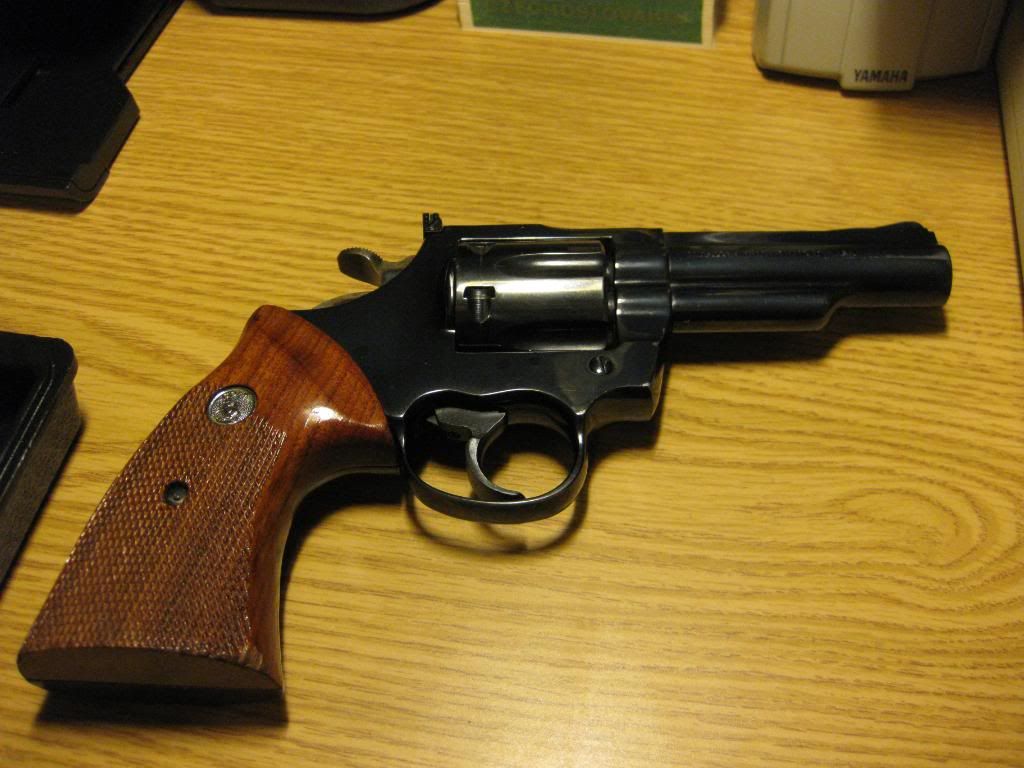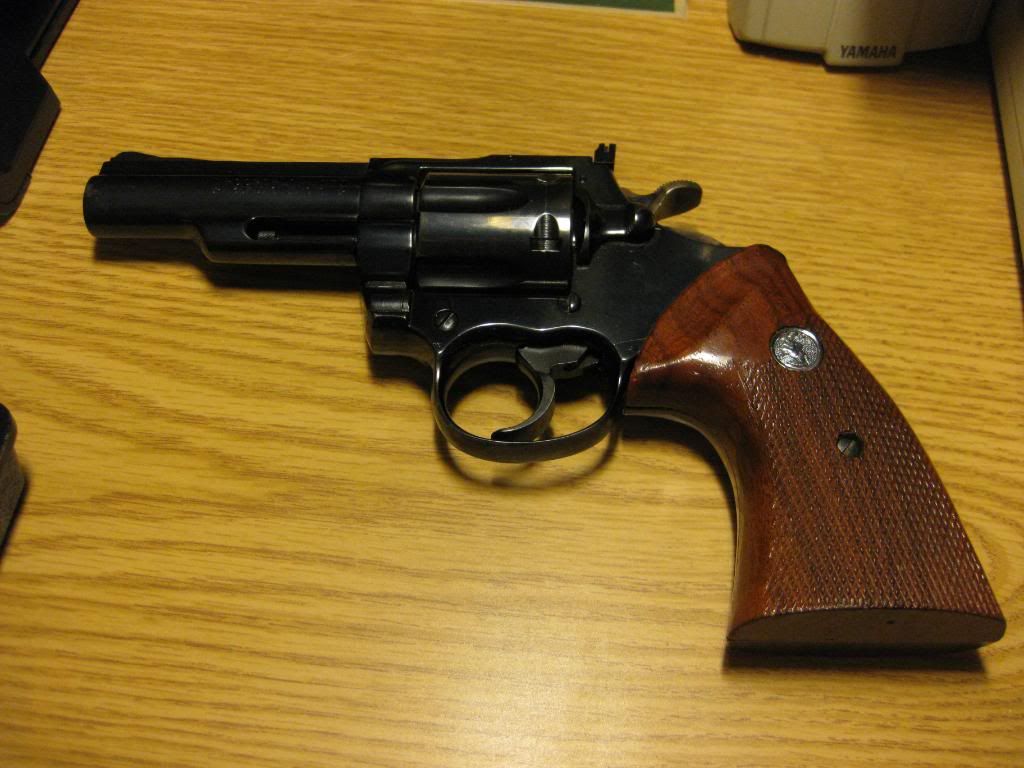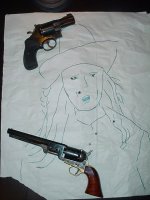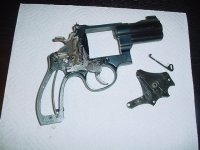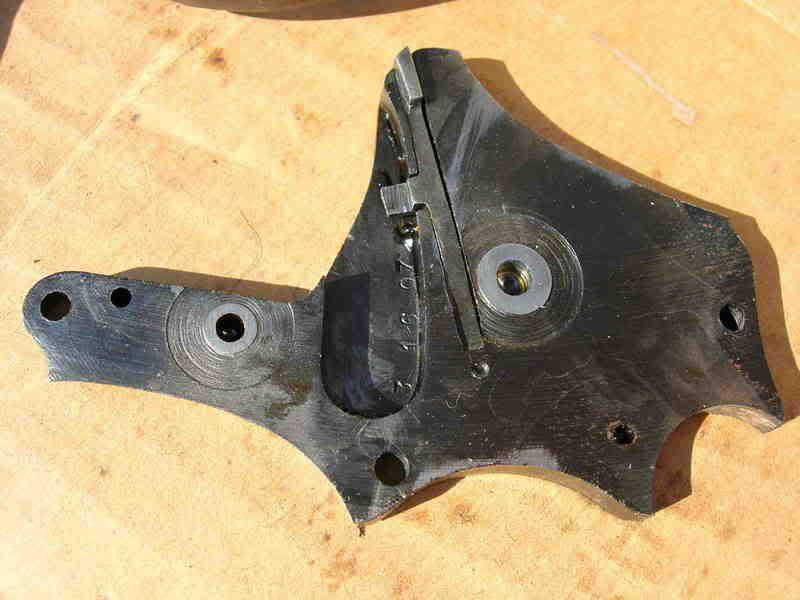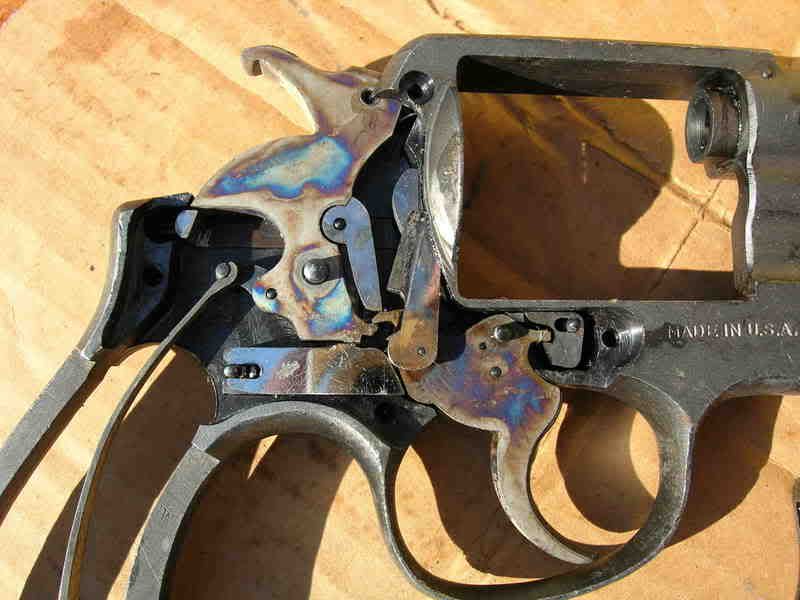My way to remove a sideplate.
Seaman said:
Can recall putting a new ring gear in the oven and the flywheel in the freezer, then the ring gear would slip onto the flywheel easily, hot/cold treatments really work.
The "Sweat Fit" technique works exactly as you say it did and for the reasons you understand.
Seaman said:
But the freezer method sounds like it should work, contraction-expansion…over and over.
Getting the sweat fit parts apart, however is another problem entirely. When they are apart, it is easy to cool the inner part and warm the outer one. Once they have a grip on one another, it is VERY difficult to heat one without heating the other. Depending on the shape of the parts, it can be done, but is pretty iffy.
I don't think a freeze-thaw cycle, no matter how many times repeated, will work on your sideplate unless is just happens to make whatever adhesive (or adhesive-like dried lubricant) get brittle.
I would try this:
Hold the (unloaded, naturally) revolver in my left hand, cylinder removed, grips removed. Make sure ALL the screws that retain the side plate are removed. With a piece of softwood, give the grip frame (as near the main part of the gun as you can accurately, without striking the side plate) moderate whacks. The top strap will be against the heel of your hand and your fingers will be on the trigger guard. (If you are doing this on a Dan Wesson, it will be the other way around, as the side plate is on the left. Not sure about Colts.)
The frame will be knocked downward. Inertia will tend try to keep the side plate stationary, thus making the side plate work itself up from the frame (same principle as bullets "jumping crimp" due to recoil, but in a different direction).
Forgive me if my description seems overly detailed. I am not talking down to you. I just know that text is easy to misinterpret and there will be many other who read this who don't know as much about revolvers as you do.
You can do this inverted so that gravity assists the side plate (as you whack upward on the grip frame), but this invites loss of parts when the side plate falls off and some internal parts may escape, too. Some of them are spring-loaded, so you really cannot expect them to fall straight down, either.
I usually suggest (only partly tongue-in-cheek) that the first time you disassemble anything you should do it naked inside a backpacking tent. That way no parts can get caught in your clothes or fly across the room and get lost. But try explaining THAT to a spouse.
Good luck.
Lost Sheep

